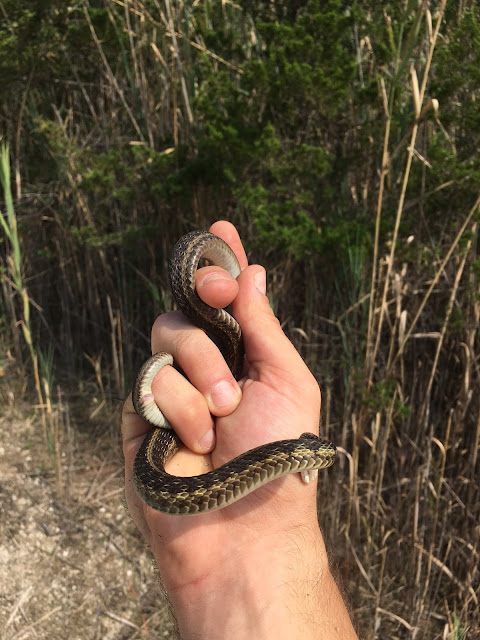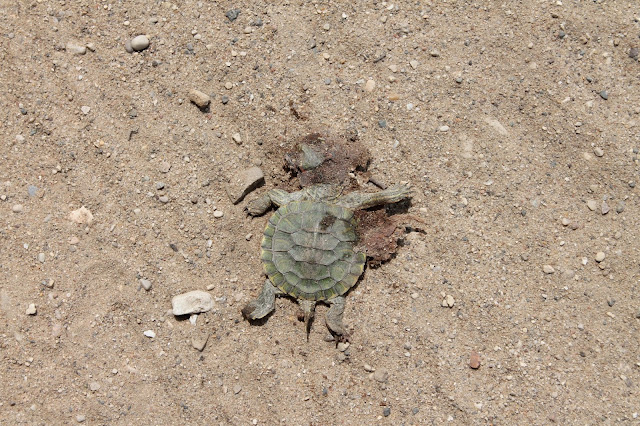2016 was a really interesting year. At almost exactly the halfway mark on the calendar, my daughter Lumen was born, and well, babies have a way of asserting their presence and dependency. And for the first two months or so, it was legitimately difficult. For a borderline dromomaniac like myself, it took a lot of strength and patience to stay home and combat the near-constant screaming and crying of my colicky baby. I knew the condition would eventually wane, but there were some late nights/early mornings, where sleep deprivation and hysteria were well and alive in this house. Just another day, I told myself. Just go day by day.
One morning we woke up to find Lumen quiet in her bassinet. I feared something bad had happened. But nope, sound asleep and calm. Was this the turning point I was waiting for? Soon after, she began smiling back at us and was able to support her head, which allowed her to look around inquisitively. THAT was a milestone if I ever saw one. It really benefited us that she was rewarding us for all the love and care we were providing. Now, at nearly five months of age, five minutes don't pass where she doesn't look right at me and smile and giggle. It makes a WORLD of a difference. It makes me a proud daddy. And most importantly, it makes me feel invincible. If I could survive all that happened early on, I could take on anything (but Lumen, please don't challenge me!).
Since Lumen has been around, I haven't been as goal-oriented/able to commit to any comprehensive herping projects. Just little excursions for fun mostly, which is still great. It's a lot more acceptable for me to become distracted when I'm just outdoors and having fun.
Warning: The following are all cell phone captures. No glamour beyond this point.
A few shots from a September 24th expedition to the coal strip mines of Mazonia, best known for their extremely rich quantity and diversity of fossils hundreds of millions of years old (or, if you're a young earth creationist, you can convince yourself that humans were sympatric with the Tully monster and other marine life forms right here in Illinois, perhaps as little as a thousand years ago...). Anyway. Tom Anton enlisted my help in capturing a plains leopard frog for a then-upcoming exhibit at the nature museum. It probably would have helped had either of us cared to bring along a net. We saw a few plains leopards, including one beastly beauty, but despite the cool temperatures, the frogs outwitted us and disappeared into the vegetation just at the right moments. Ironically, we ended up catching bullfrogs and green frogs, the ones we had no official use for.
A small tributary of the Mazon River.
A feisty eastern garter (Thamnophis sirtalis).
This tiny northern water snake (Nerodia sipedon) was found in a roadside puddle the area of a football. In the puddle were a few Rana larvae too big for this snake to eat. It probably didn't stop it from trying.
One of many gravel roads that criss-cross the area. Today they are mostly used by outdoor sportsmen and fossil hunters.
A November 19th trip with the goal being to get some good photographs of the southern two-lined salamander (Euycea cirrigera), since I still haven't gotten any before. When I found my first salamander, I prepped to shoot it when I realized my camera battery was dead. Words cannot describe how frustrated one can get after driving an hour and a half for the sole purpose of getting some shots of a tiny salamander, only to be shafted. Good thing I was with a botanist (Trevor Dean Edmonson) and a fossil/mussel mogul (Matthew Ignoffo). They paved the way to happiness, and Trevor even brought doughnuts.
Here's a crappy cell phone shot of one of the two-lineds.
Creek-walking and exploring.
Some really cool geology here.
Looks like decent mudpuppy habitat, but no mudpuppies were found.
Trevor looking for pups
Trilobite impression Matt's son found
Trevor in his unyielding pursuit of Necturus maculosus.

























































